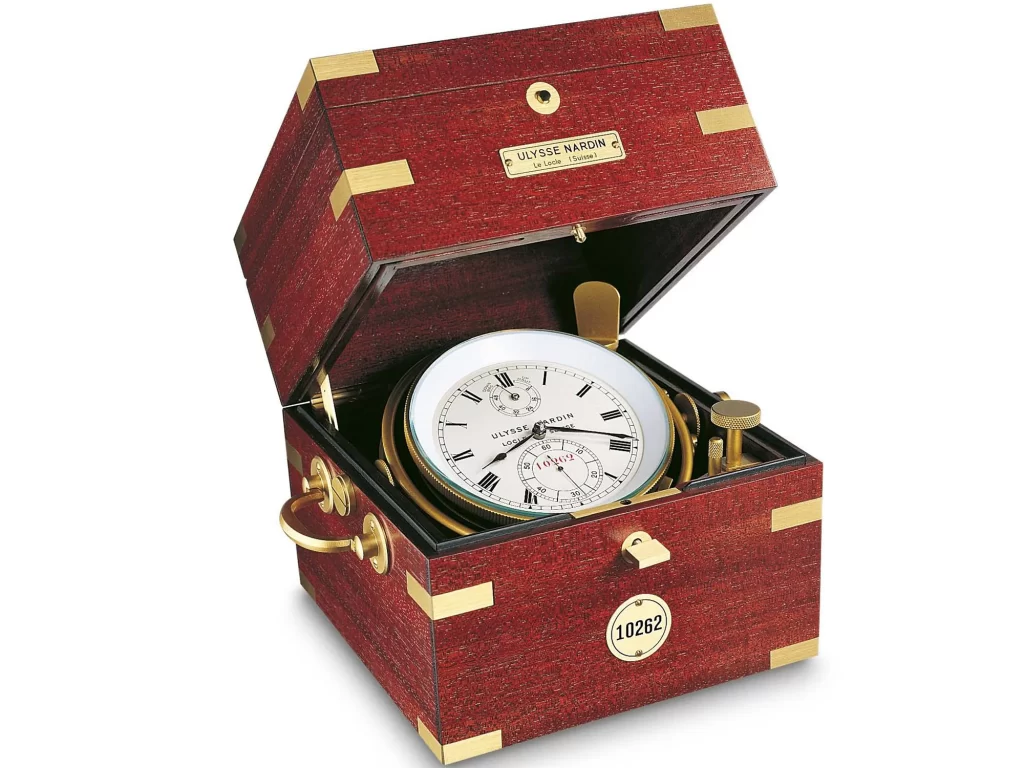What is a Chronometer?
A chronometer is a highly accurate timekeeping device, originally designed for maritime navigation. It is a crucial tool that has played a pivotal role in the advancement of navigation and timekeeping. This article will delve into the definition, history, types, and significance of chronometers, as well as how they differ from other timekeeping devices. Additionally, we will explore the certification process for chronometers, their applications, and their impact on various fields.
Definition of a Chronometer
A chronometer is defined as a timepiece that is designed to keep time with great accuracy despite external factors such as temperature, humidity, and pressure. The term is often associated with marine chronometers, which were essential for determining longitude at sea. In modern usage, the term can refer to any highly accurate watch or clock that has passed specific precision tests.
Historical Background
The development of the chronometer was driven by the need for accurate timekeeping in maritime navigation. Before the invention of the chronometer, sailors struggled to determine their longitude, which often led to shipwrecks and loss of life.
Key Historical Milestones:
- Early Timekeeping: Before the 18th century, sailors relied on celestial navigation and rudimentary timekeeping methods, which were insufficient for accurate navigation.
- Longitude Act of 1714: The British government offered a substantial reward for anyone who could develop a reliable method for determining longitude at sea. This incentivized inventors and watchmakers to create precise timekeeping devices.
- John Harrison’s Invention: John Harrison, an English carpenter and clockmaker, invented the first successful marine chronometer in the 1730s. His designs, particularly H4, allowed sailors to calculate their longitude accurately, revolutionizing maritime navigation.
- Chronometer Competitions: In the 19th century, observatories began holding competitions to test the accuracy of timepieces. These competitions established rigorous standards for what constituted a chronometer.
Types of Chronometers
Chronometers can be categorized based on their design and intended use:
| Type | Description |
|---|---|
| Marine Chronometer | A timepiece designed for use at sea, capable of withstanding harsh conditions and providing accurate time for navigation. |
| Wrist Chronometer | A wristwatch that meets specific accuracy standards and has been certified by an official body. |
| Pocket Chronometer | A portable timepiece that was popular in the 19th century, often used by navigators and explorers. |
| Observatory Chronometer | A timepiece tested under controlled conditions at observatories to ensure high precision. |
How Chronometers Work
Chronometers utilize various mechanical and electronic components to maintain accuracy. Here’s a brief overview of how they function:
- Escapement Mechanism: The escapement regulates the release of energy from the mainspring, allowing the gears to move at a consistent rate.
- Balance Wheel: The balance wheel oscillates back and forth, controlling the movement of the gears and ensuring accurate timekeeping.
- Temperature Compensation: Many chronometers include mechanisms that compensate for temperature changes, which can affect the elasticity of the balance spring and, consequently, the timekeeping accuracy.
- Testing and Certification: To be classified as a chronometer, a timepiece must undergo rigorous testing by an independent organization, such as the Contrôle Officiel Suisse des Chronomètres (COSC) in Switzerland. The testing process typically involves measuring the watch’s accuracy over a period of time in various positions and temperatures.
Certification Process for Chronometers
The certification process for chronometers ensures that only the most accurate timepieces receive this designation. Here’s how the process typically works:
- Submission: Watch manufacturers submit their timepieces to a certification body, such as COSC.
- Testing Conditions: The watches are tested under controlled conditions for a minimum of 15 days. They are placed in different positions (e.g., dial up, dial down) and subjected to varying temperatures.
- Accuracy Measurement: The watches are compared against atomic clocks, and their accuracy is measured in terms of daily variation. To be certified, a chronometer must not deviate by more than -4 to +6 seconds per day.
- Certification Issuance: If the watch passes the tests, it receives a certificate and may be labeled as a “chronometer” on the dial.
Applications of Chronometers
Chronometers have a wide range of applications beyond maritime navigation. Here are some notable uses:
- Aviation: Accurate timekeeping is essential for flight navigation and coordination. Chronometers are used in aircraft to ensure precise timing.
- Scientific Research: In fields such as astronomy and physics, chronometers are used to measure time intervals with high precision.
- Sports Timing: Chronometers are employed in competitive sports to accurately time events, such as races.
- Everyday Use: Many high-end wristwatches are certified chronometers, appealing to consumers who value precision and craftsmanship.
The Impact of Chronometers on Navigation
The invention of the chronometer significantly impacted navigation and exploration:
- Improved Safety: Accurate timekeeping allowed sailors to determine their position at sea, reducing the risk of shipwrecks and loss of life.
- Expansion of Trade Routes: With reliable navigation, maritime trade routes expanded, facilitating global trade and exploration.
- Scientific Advancements: The need for accurate timekeeping spurred advancements in horology and engineering, leading to innovations in watchmaking.
Conclusion
A chronometer is more than just a timekeeping device; it represents a significant advancement in navigation and precision engineering. From its historical roots in maritime exploration to its modern applications in various fields, the chronometer has played a crucial role in shaping our understanding of time and navigation. Its rigorous certification process ensures that only the most accurate timepieces earn the title of “chronometer,” making it a mark of quality and precision in the world of horology.
Frequently Asked Questions (FAQs)
1. What is the main purpose of a chronometer?
The main purpose of a chronometer is to provide highly accurate timekeeping, particularly for navigation at sea.
2. How does a chronometer differ from a regular watch?
A chronometer is specifically tested and certified for accuracy, while a regular watch may not meet the same precision standards.
3. What organizations certify chronometers?
The most well-known certifying body is the Contrôle Officiel Suisse des Chronomètres (COSC) in Switzerland. Other countries have their own certification organizations as well.
4. Can any watch be called a chronometer?
No, only watches that have undergone rigorous testing and met specific accuracy standards can be labeled as chronometers.
5. How accurate is a chronometer?
A certified chronometer must not deviate by more than -4 to +6 seconds per day.
Additional Resources
For more detailed information about chronometers, you can refer to the following link:
- Wikipedia – Chronometer
This comprehensive guide on chronometers provides insights into their history, functionality, and significance, ensuring a thorough understanding of these remarkable timekeeping devices.



